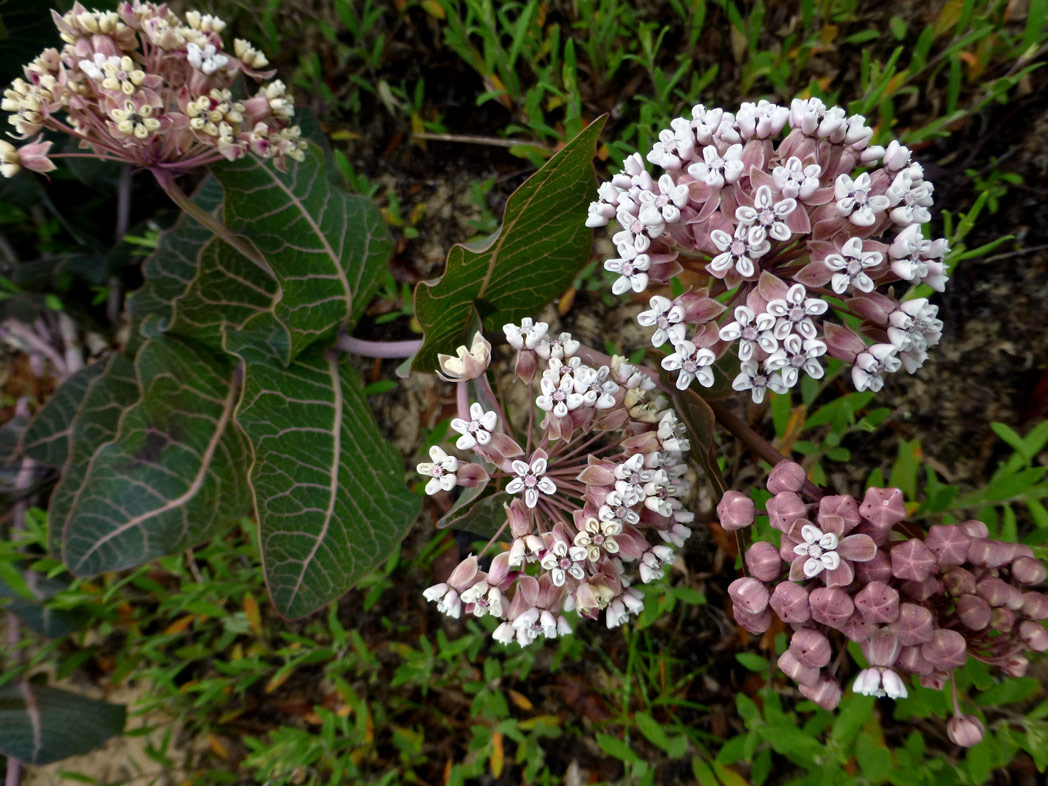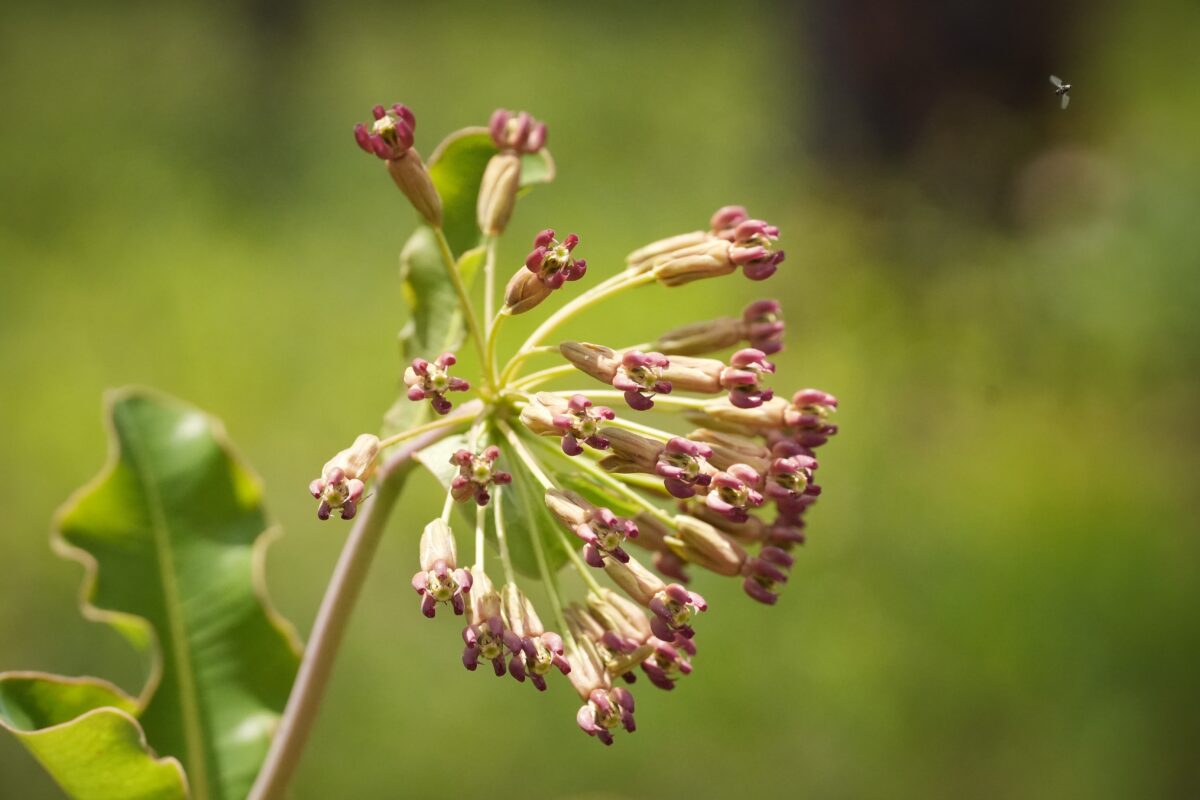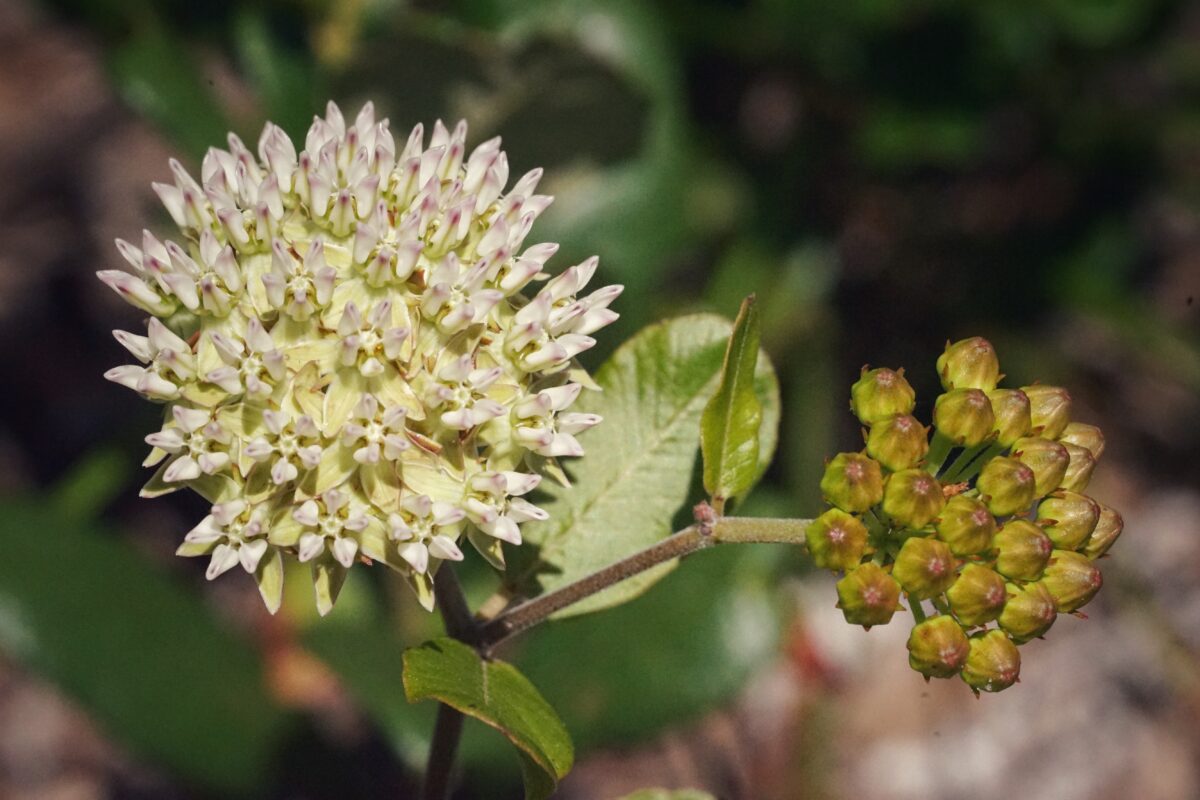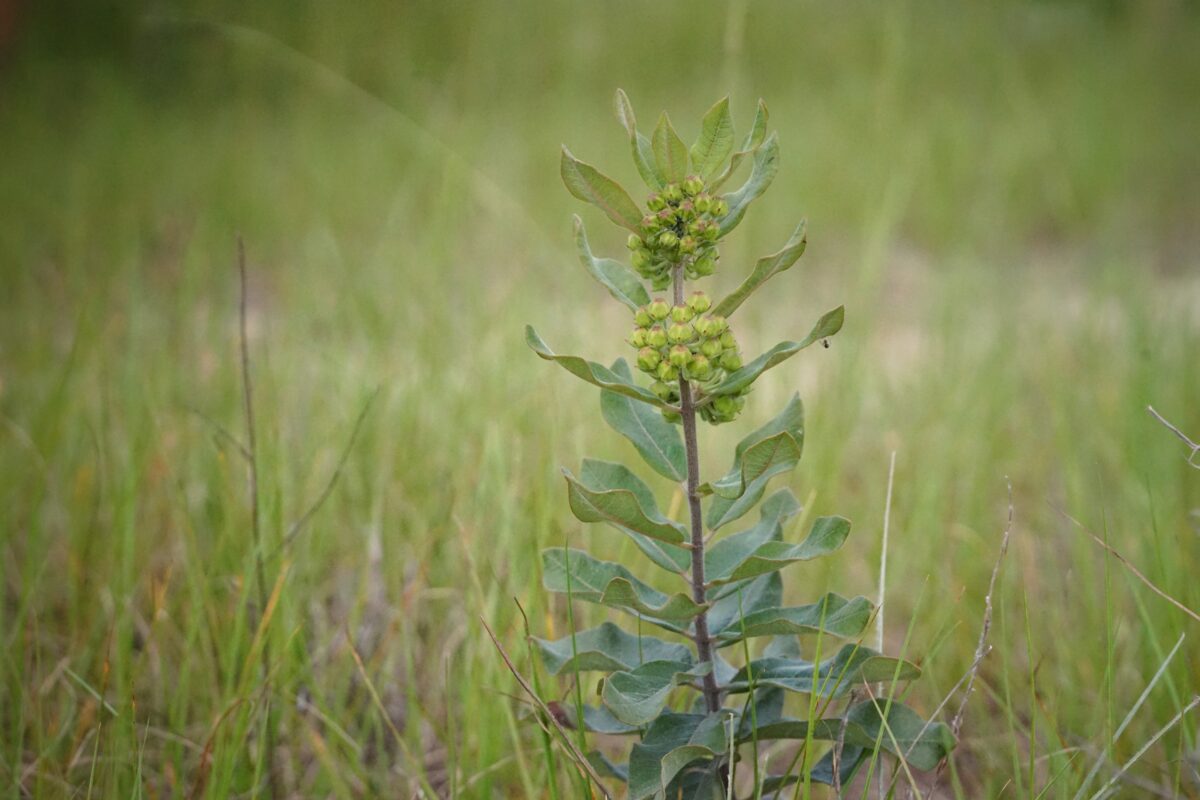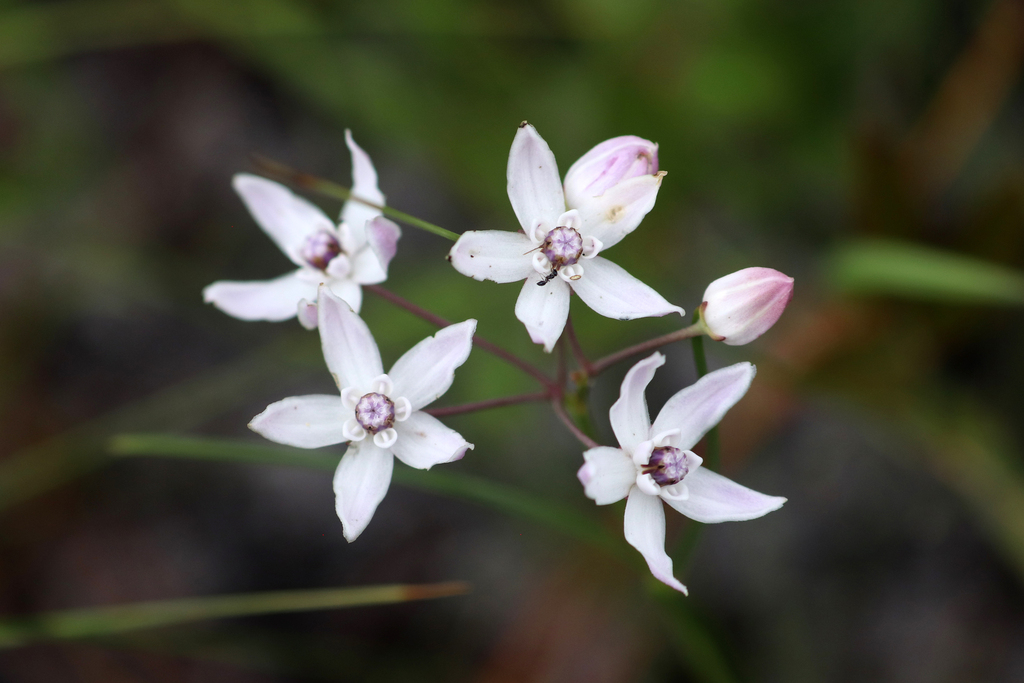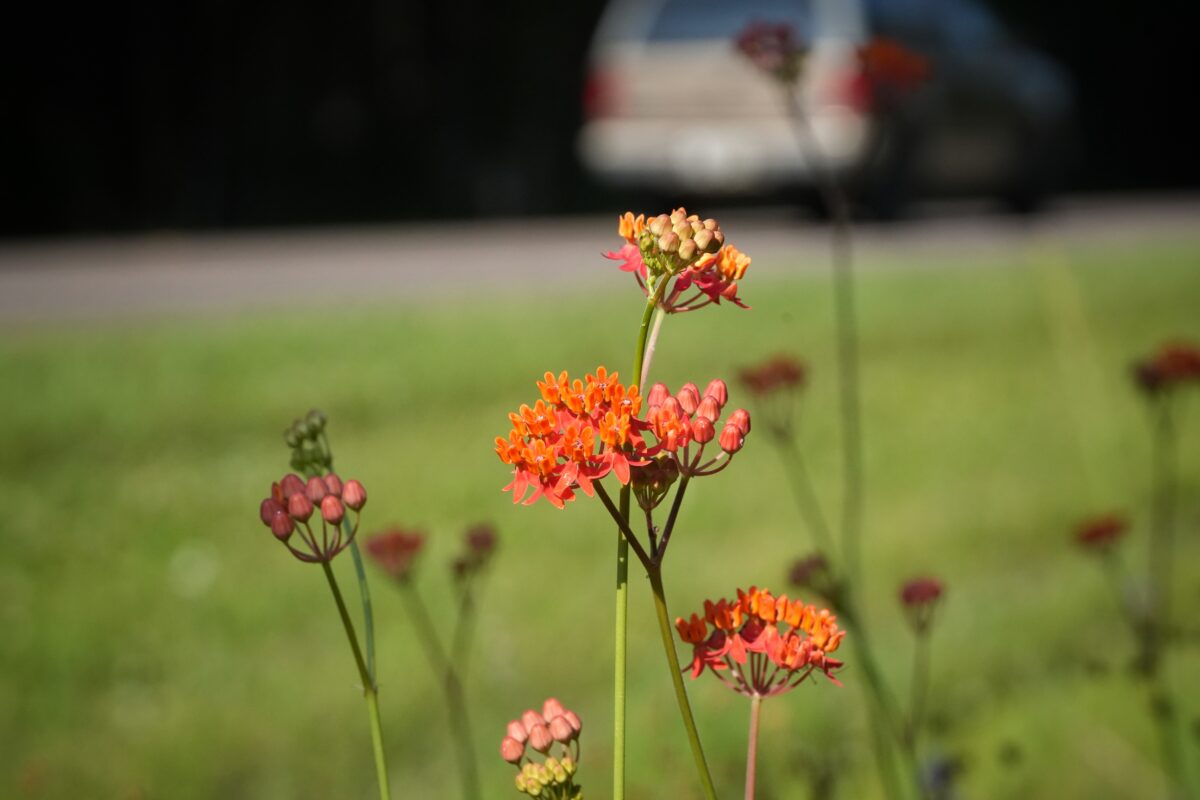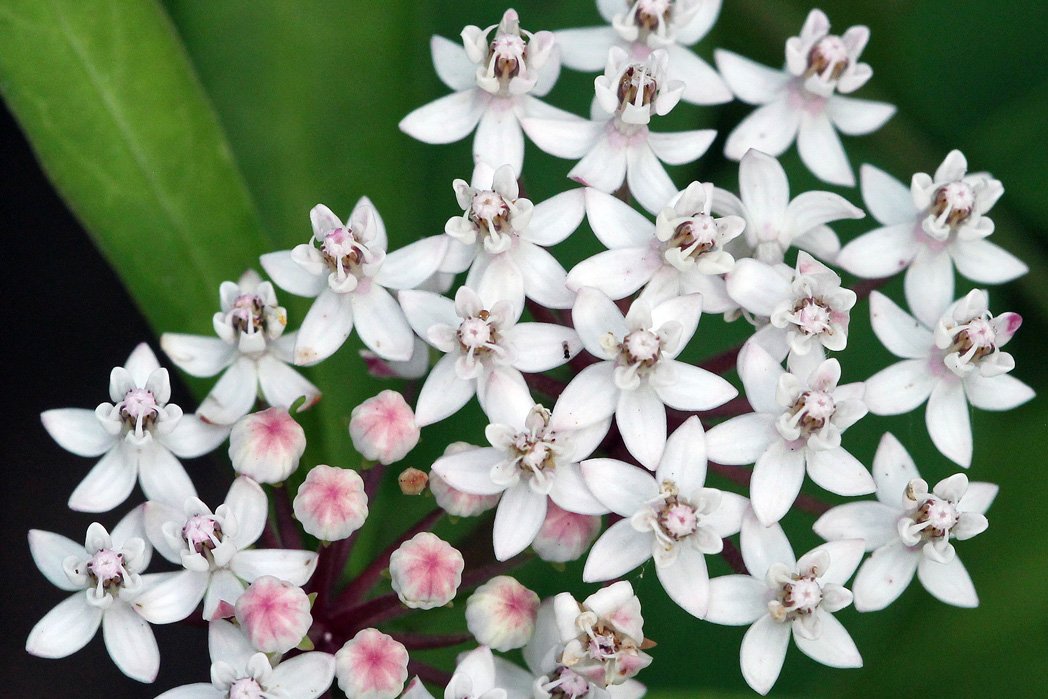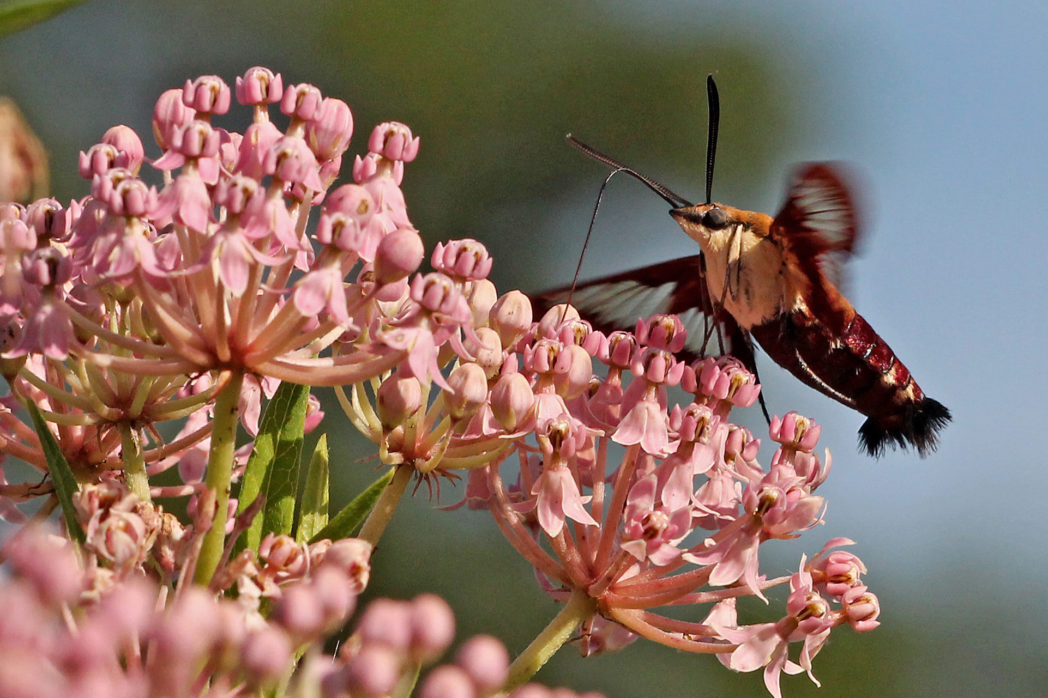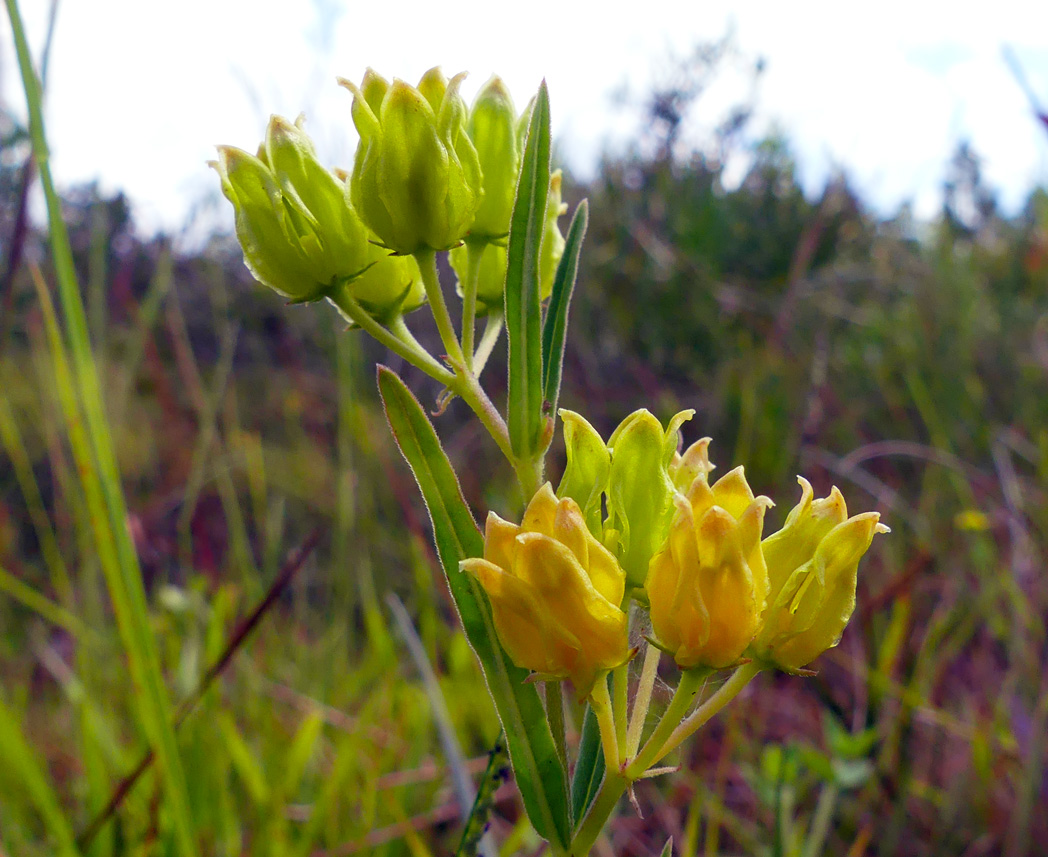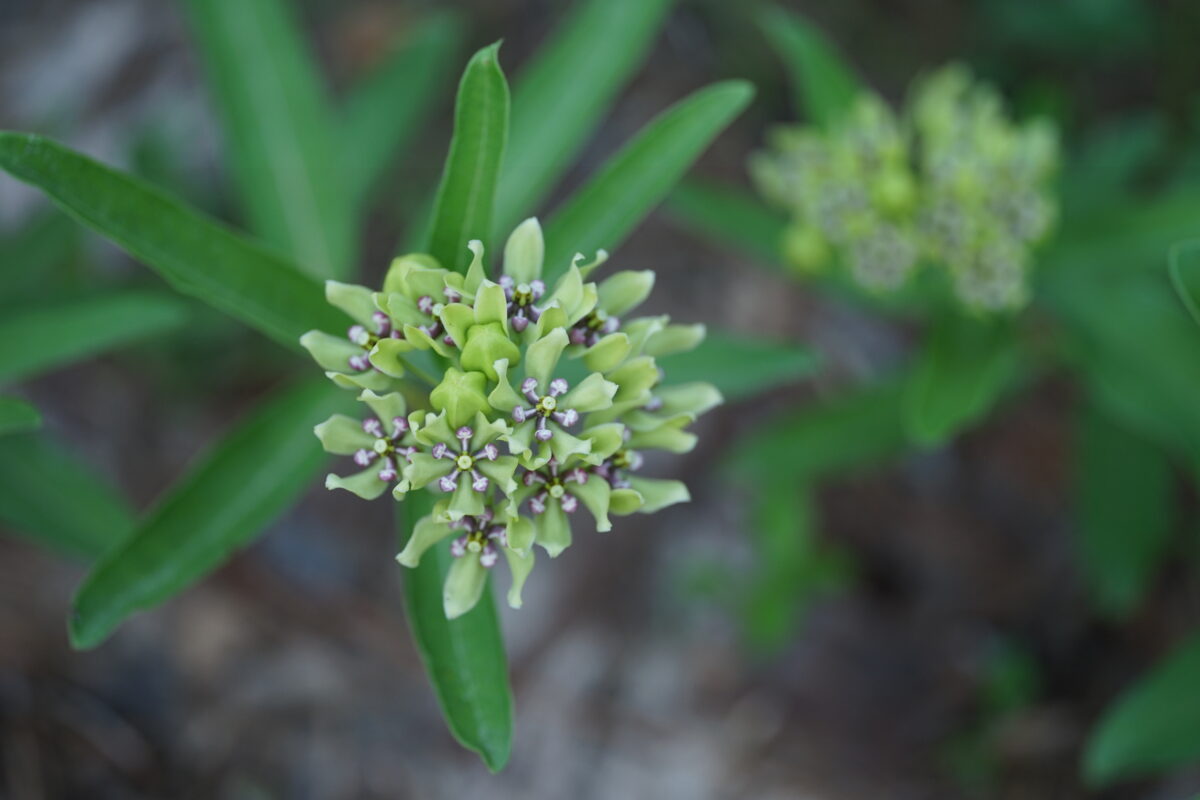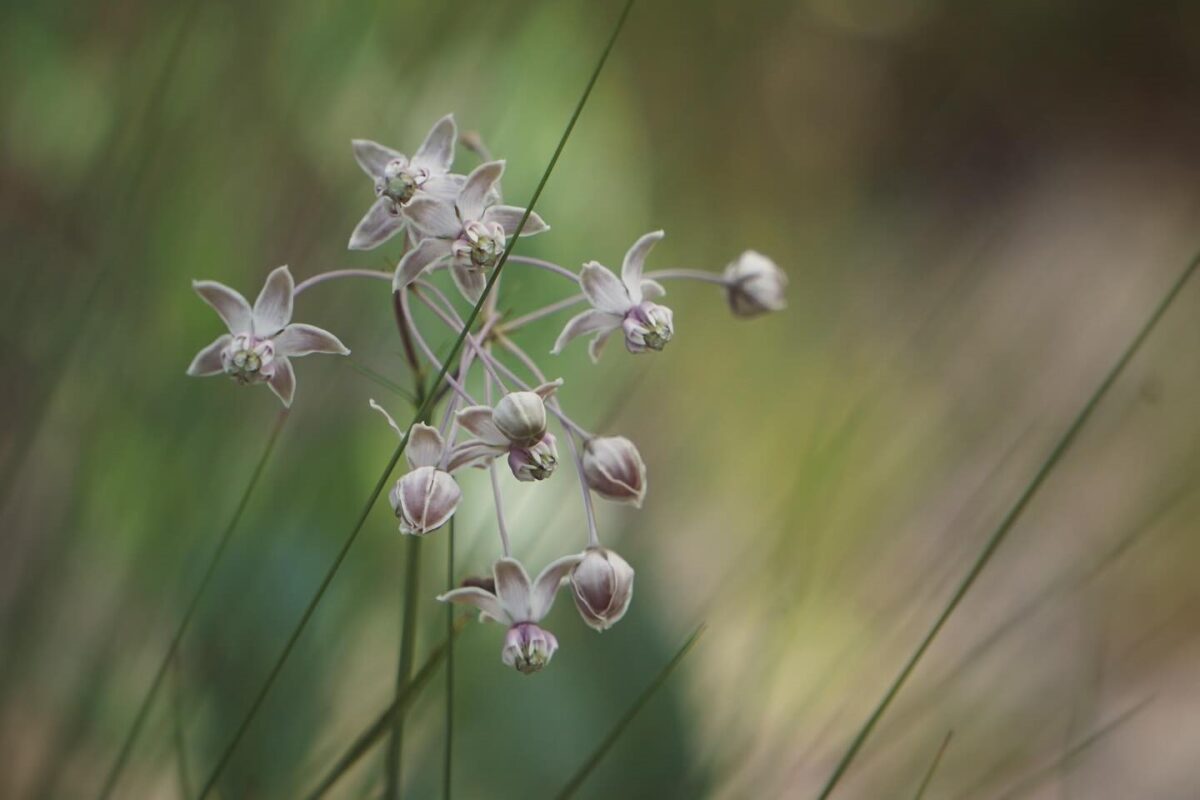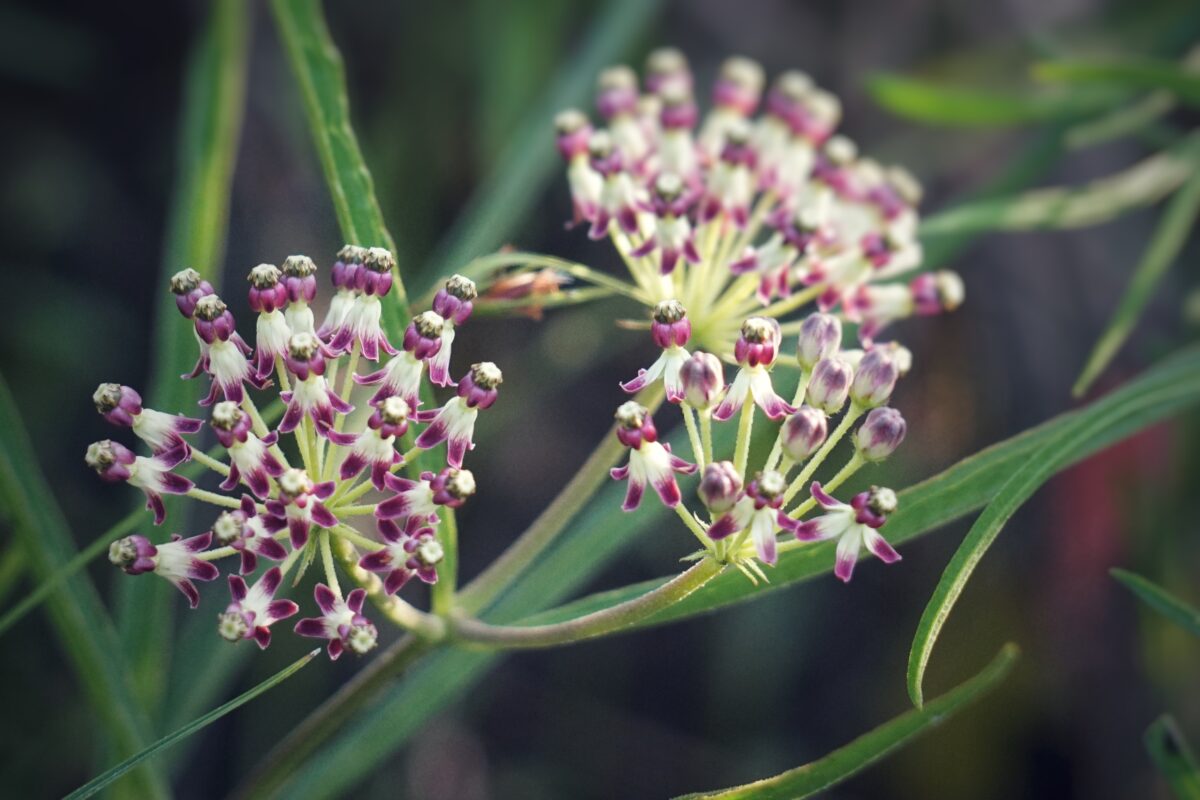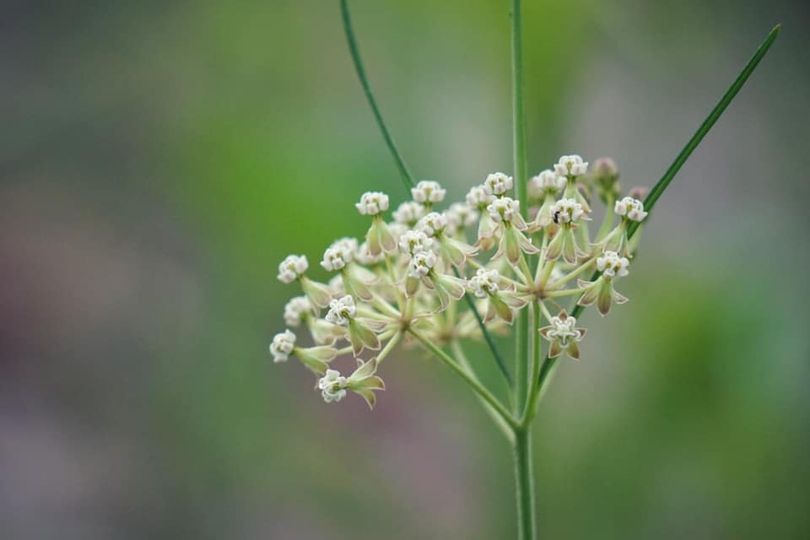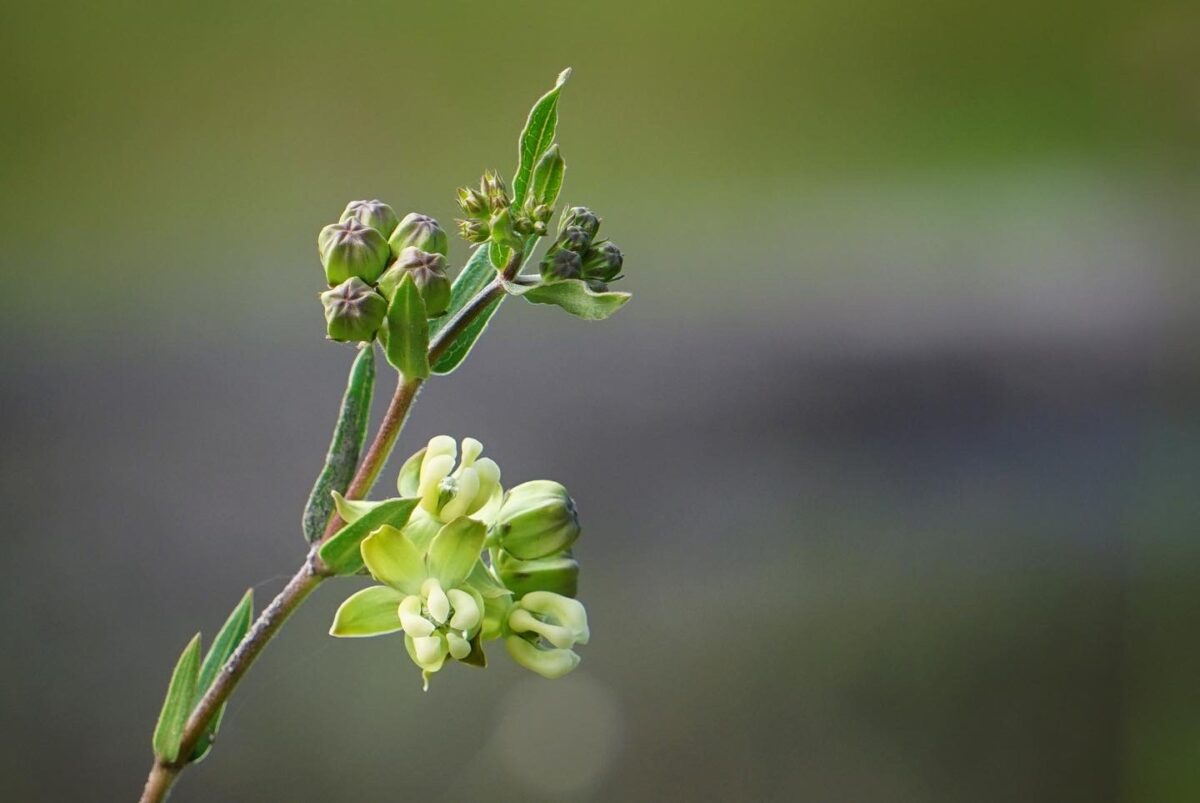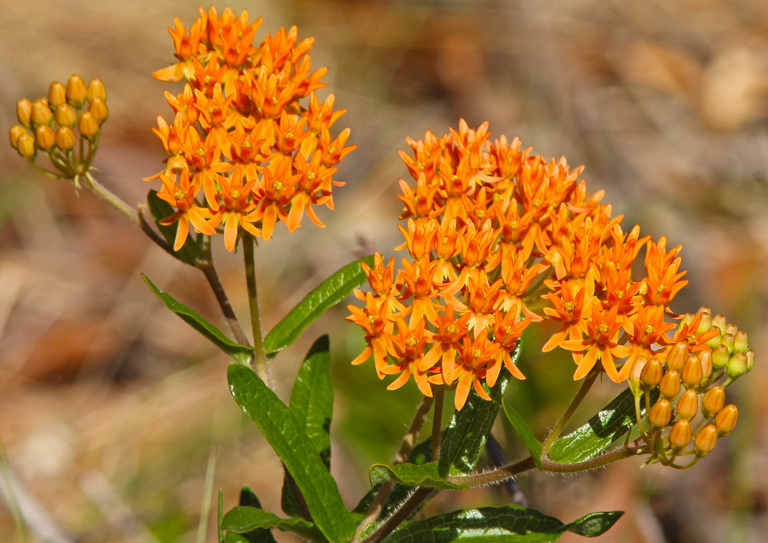Pinewoods milkweed
Pictured above: Pinewoods milkweed (Asclepias humistrata) by Eleanor Dietrich. Click on terms for botanical definitions. View post as a PDF.
Also known as Sandhill or Purple milkweed, Pinewoods milkweed (Asclepias humistrata) is a robust perennial wildflower, with large, thick leaves and a somewhat sprawling growth habit.
Its distinct flowers are pinkish-white to pale purple and are born in terminal umbels. Individual flowers have reflexed corollas and an upright corona — a characteristic typical of milkweed flowers. Leaves are dull grayish-green with conspicuous pink to lavender veins; the leaf color darkens to almost purple as the plant matures. Leaves are clasping, elliptic to ovate, and can grow up to 6″ long and 3-4″ wide. Leaf arrangement is opposite. The plant’s many stems may be prostrate or ascending and grow in various directions. Like other milkweeds, it contains a toxic milky sap. Seeds are born in erect follicles that dry and split open as the fruit matures. Each seed is attached to a white silky pappus that catches the wind and aids in dispersal.
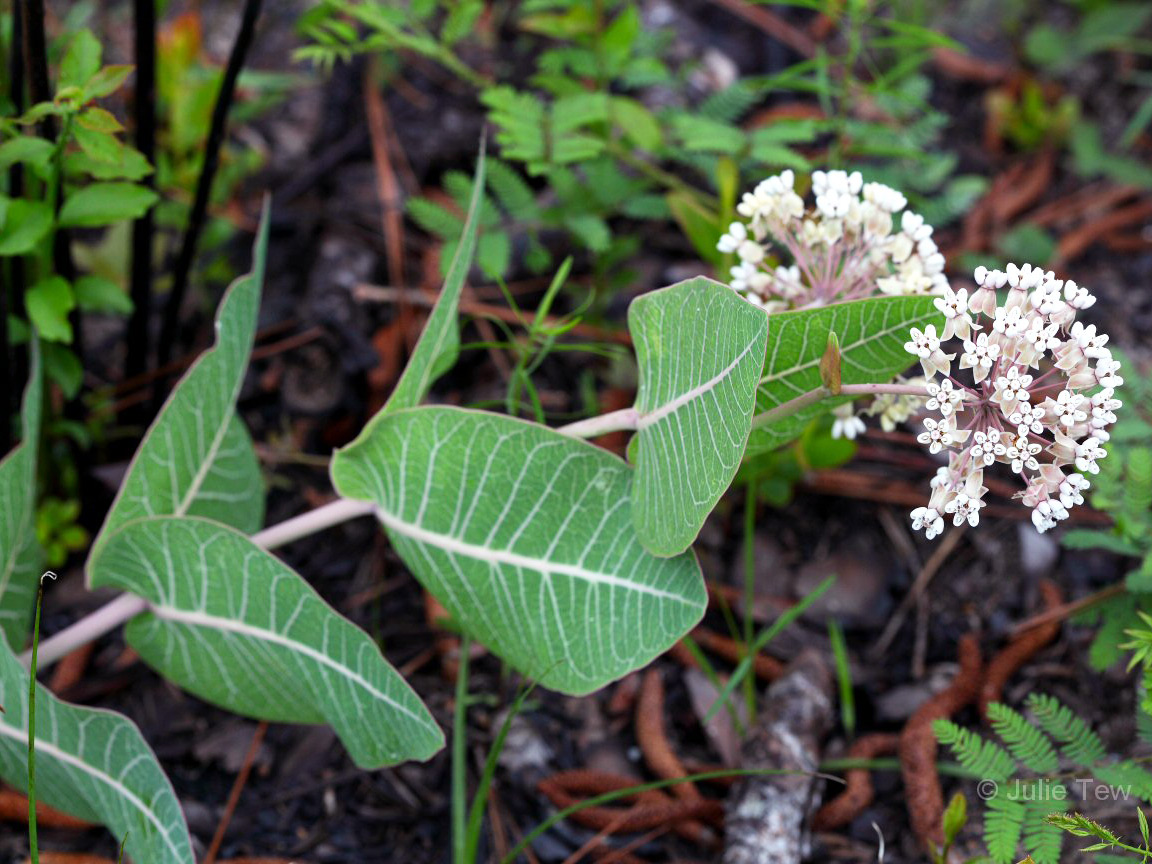
Pinewoods milkweed occurs naturally in sandhills, scrub and dry, ruderal areas. It blooms in spring and summer, attracting many pollinators including wasps and butterflies. Like all members of the Asclepias genus, Pinewoods milkweed is a larval host plant for Monarch, Queen and Soldier butterflies. The plant contains a milky latex that is toxic to most animals, but Monarch, Queen and Soldier caterpillars are adapted to feed on them despite the chemical defense.
The genus Asclepias is named for Asclepius, the Greek god of healing. The species epithet humistrata comes from the Latin humis, or “sprawling,” and sternere, which means “to spread,” referring to its low sprawling growth habit.
Family: Apocynaceae (Dogbane family)
Native range: Panhandle, north and central peninsula
To see where natural populations of pinewoods milkweed have been vouchered, visit florida.plantatlas.usf.edu.
Lifespan: Perennial
Soil: Deep, well-drained sandy soil
Exposure: Full sun
Growth habit: 1–3′ tall, 1′ wide
Propagation: Seed
Florida regions of landscape suitability: North, Central
Garden tips: Pinewoods milkweed is difficult to transplant due to its long taproot and is best propagated from seed. If planted in excessively moist, poorly drained or rich, organic soils, the plant will quickly rot and perish. It requires deep well-drained dry sand to succeed and can be difficult to maintain in most landscape settings.
Pinewoods milkweed plants are occasionally available from nurseries that specialize in Florida native plants. Visit www.plantrealflorida.org to check availability at a nursery in your area.
Learn more about Pinewoods milkwood from the Florida Native Plant Society and the Institute for Regional Conservation.
For more information on other Asclepias species, see these resources:

